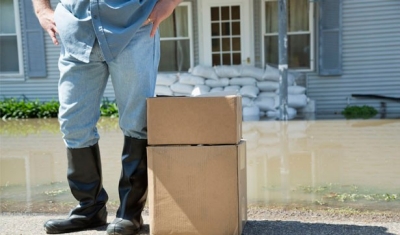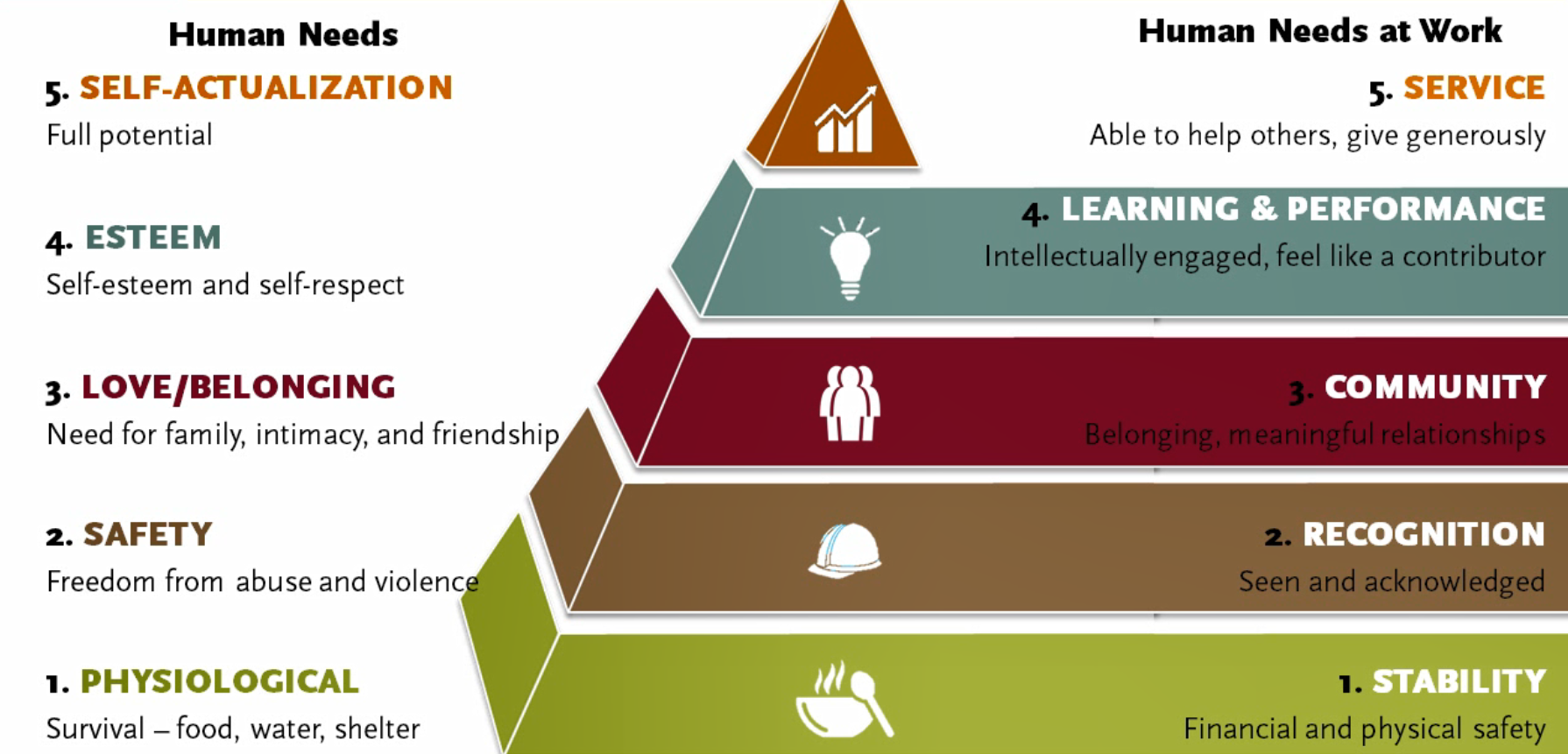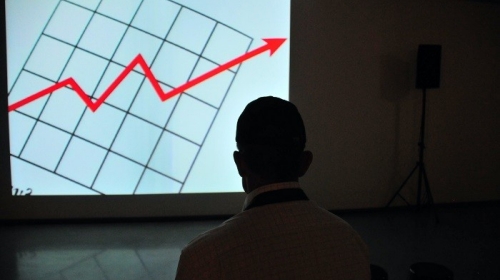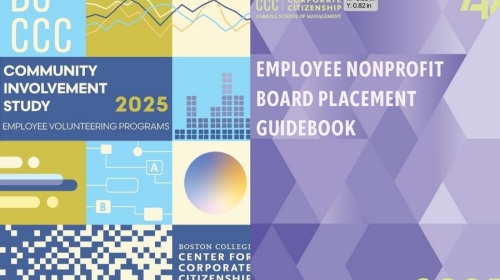WEBINAR: This webinar explores how to measure and communicate your organization's social impact with proven frameworks and strategies that matter to stakeholders.
Employee engagement for workers who fulfill essential roles

Much has been written in recent days about the everyday heroes who are keeping grocery stores, pharmacies, and healthcare facilities open.
We’ve seen the videos of people living urban centers around the world lining up in windows to applaud healthcare workers coming off their shifts. This is a wonderful gesture and there are plentiful others who go unheralded because they are not mostly in contact with the public (the truck drivers, the road maintenance crews, the line people who keep power up and running, manufacturers, growers…the list goes on and on). How can companies keep those essential workers engaged and make sure that they continue to come to work while staying safe?
We often write about employee volunteering as a way to mobilize workers—and it is. Bringing people together around a common purpose helps to form group identity, reinforces culture, and facilitates relationships. This piece is intended to explore the needs of a workers who are working in an operational crisis. They can’t be pulled away from mission-critical work, so how do we keep morale and productivity up?
Willingness to exert effort is affected by both internal and external motivations. In his excellent book, Drive, Dan Pink points out that social science research has shown us for a hundred years that people are mostly intrinsically motivated, meaning that as long as compensation is appropriate, our performance and commitment is not likely to be improved by financial incentives in a sustained way. Pay has to be at least adequate (and hopefully better than adequate in a disaster situation) and it has to be fair. Assuming that is the case, the first consideration has to be for ensuring that basic human needs (think Maslow’s hierarchy, pictured below) are met. The organizational ladder of development follows the human ladder.

To keep people coming to work motivated, first make sure their most basic physiological needs are met. Provide food and beverage and make it easy for them to get it (can you deliver it to where they are?) Make sure they have better than adequate places to eat, rest, and bathe if they are being asked to do multiple shifts. We don’t want “hangry” or overly fatigued or stressed workers in the best of times, we certainly don’t want to contribute to those states during a crisis.
Make sure they feel safe. The concern for safety is also a common human need. Understandably, much of the research on crisis and worker motivation emanates from the public health literature. The lessons learned there are applicable to other professions. A consistently reported concern of workers during a crisis is fear for the safety of self and loved ones (family, friends, or pets).[i] [ii] Of course, we need to make sure that workers have adequate personal safety gear, sanitation, and health screenings when we are asking them to expose themselves to risks. Additionally, some companies overstaff and shorten shifts for crisis situations to avoid errors.[iii] Safety practices should be reviewed and monitored continually.
The provision of care for dependent children or adult dependents unable to care for themselves is another safety concern of workers. Go the extra mile to facilitate their communication with loved ones to lessen family safety concerns[iv]. Additionally, services to provide care for pets of employees while on the clock would alleviate yet another concern of some workers.[v]
Once basic needs are met, the other intrinsic motivations such as self-actualization speak to the human need to create a sense of belonging to something larger than them. To feel connected to a purpose is a powerful motivation. What do we mean by purpose? Understanding the importance of the mission, feeling like their work matters in specific ways, and understanding the impact—the ‘why’ behind the mission can increase motivation.[vi] This means leaders should be communicating more (with all of their workers), but with frontline workers especially. Make sure that workers understand the objectives of the mission, the roles that they are playing to achieve the objectives of work, and that they are kept up to date on progress towards objectives. Can employees working remotely be engaged in volunteering that incorporates some sort of support for people on the front lines? Great!
If your leaders can be on the front lines periodically with workers in essential roles to hear their concerns and to recognize their efforts, all the better. Public praise should be given liberally, but to teams rather than individuals.[vii] This may seem counterintuitive until you think about what happens if someone is missed in a laudatory litany of recognition. Hurt feelings can be demotivating and turn to resentment, which can be contagious (this speaks to fairness).
Praise should be given to individuals in private. Pink makes the point that individual praise is feedback and all performance-related feedback is best given in private. This is also an opportunity to hear from individuals on the front lines about where they feel well-supported and an opportunity for you to find out where they may feel like they would benefit from additional support or development.
One of the most important roles that corporate citizenship teams can play during crises situations is to support and communicate the work of their frontline heroes. During public health crises, frontline workers often find themselves isolated from society and stigmatized due to the high-risk nature of their jobs[viii] A recent study of nurses suggests that co-worker and supervisory appreciation can be a sustaining factor for workers maintaining positive energy and performance during a crisis[ix] We can’t necessarily reproduce the spontaneous outpouring of appreciation seen in European cities recently. We can organize colleagues and friends to deliver meals, write notes of appreciation, and deliver (metaphorical) pats on the back.
Here are some of the actions being taken by our member companies to support workers:
Casey Miller, Executive Vice President of Kiddie Academy, shared how the company is staying true to its motto Community Begins Here® through the COVID-19 pandemic. “We are committed to supporting critical workers by caring for their children during this trying time. Many of our Academies have remained open with extra precautions in place, and some of our previously temporarily closed Academies have now reopened in order to continue serving our communities.” For Academies that have temporarily closed, Kiddie Academy’s team has leveraged its curriculum to craft educational activities and “mindful meditations” for keeping children engaged while home.
To ensure that employees are compensated appropriately during the COVID-19 crises, some companies—such as Fifth Third Bank, Microsoft, Major League Baseball, and U.S. Bank are offering additional payment to those who continue to work on-site, or are unable to work remotely. Others, such as Wells Fargo and EY are reimbursing hourly workers for family-care costs.
Companies such as Ally Financial, Lowes, and Campbell’s are updating paid leave policies to allow time off for those than need to care for a family member.
Aramark announced to employees that they will be offering up to 21 additional days of sick time, once all accrued sick time has been exhausted. This additional paid time off will be at no cost to the associate, regardless of how many sick days the associate has accrued. Furthermore, they have an employee assistance program (EAP) is available to all employees and their families at no cost. It provides helpful tools for managing anxiety and fears, including support to help you explain this complex situation to your children.
APS announced a $1 million contribution to help nonprofit agencies with their response to COVID-19. The company will immediately distribute $500,000 to the Arizona Community Foundation and different chapters of United Way throughout Arizona. These funds will support various nonprofit organizations directly assisting individuals and families experiencing hardship due to COVID-19. Through collaboration with a broad range of partners from different sectors, APS will work quickly to assess how the remaining $500,000 commitment can best fill resource needs across Arizona. This additional funding may be issued from the APS Foundation.
Lowe's is committing $25 million to support the emerging needs of its associates, customers and communities. This includes a $10 million donation in essential protective products to do their part in helping to keep medical professionals on the frontlines of this crisis healthy and safe. These funds will also support the Lowe's Employee Relief Fund and offer small business relief for its Pros.
As corporate citizenship professionals, you have the important role of keeping your colleagues connected, motivated, and engaged. That is a fulfilling but also stressful and sometimes draining task. We’re here to support you as you support others. Please check our Resource(ful) page for the latest list of what companies are doing, and for research, insights, and events, reach out to us directly, and connect with your peers to share and learn.
[i] Buttross, S. (2006). Responding creatively to family needs of hospital staff: Caring for children of caretakers during a disaster. Pediatrics, 117(4), 446-447.
[ii] Balicer, R., Omer, S., Barnett, D., & Everly Jr, G. (2006). Local public health workers' perceptions toward responding to an influenza pandemic. BMC Public Health, 6(99). doi: 10.1186/1471-2458-6-99.
[iii] Harvard Business Review. [2020, March 30]. How Can’t-Close Retailers Are Keeping Workers Safe. Retrieved from https://hbr.org/2020/03/how-cant-close-retailers-are-keeping-workers-safe
[iv] Imai, H., Matsuishi, K., Ito, A., Mouri, K., Kitamura, N., Akimoto, K., ... & Mita, T. (2010). Factors associated with motivation and hesitation to work among health professionals during a public crisis: a cross sectional study of hospital workers in Japan during the pandemic (H1N1) 2009. BMC Public Health, 10(1), 672.
[v] Valdez, C. D., & Nichols, T. W. (2013). Motivating healthcare workers to work during a crisis: A literature review. Journal of Management Policy and Practice, 14(4), 43-51.
[vi] Pink, D. H. (2011). Drive: The surprising truth about what motivates us. Penguin.
[vii] Ibid
[viii] Valdez, C. D., & Nichols, T. W. (2013). Motivating healthcare workers to work during a crisis: A literature review. Journal of Management Policy and Practice, 14(4), 43-51.
[ix] Blanco-Donoso, L. M., Moreno-Jiménez, B., Pereira, G., & Garrosa, E. (2019). Effects of Co-worker and Supervisor Support on Nurses’ Energy and Motivation through Role Ambiguity and Psychological Flexibility. The Spanish journal of psychology, 22.
Related Content
RESEARCH BRIEF - Researchers investigated how ESG activities help or hurt financial performance, using nine years of data from over 1,200 global companies.
RESEARCH BRIEF - Researchers analyzed 4 US energy exchange-traded funds (ETFs) over 15 years, including 2 dirty energy funds tracking fossil fuel companies and 2 clean energy funds tracking renewable energy companies.
RESEARCH BRIEF - Researchers conducted a survey, which measured perceptions of CSR and ethical leadership within the manufacturing and service industries.
WEBINAR: This webinar explores how corporate giving will be reshaped by the One Big Beautiful Bill. Hear directly from corporate citizenship leaders as they share innovative, real-world strategies that deliver impact for communities and results for business.
This study explores shifting trends in employee volunteering, corporate giving, and other means of corporate community involvement.
This guidebook offers insights on placing employees in nonprofit board service roles.
This study explores shifting trends in employee volunteering, corporate giving, and other means of corporate community involvement.








